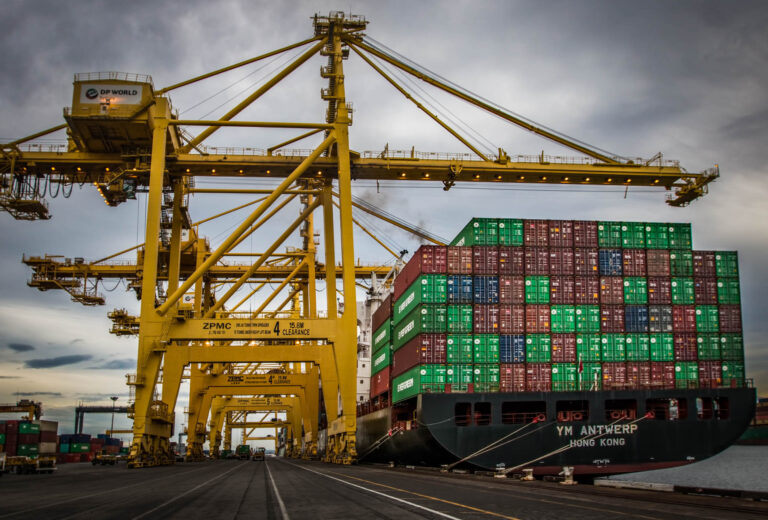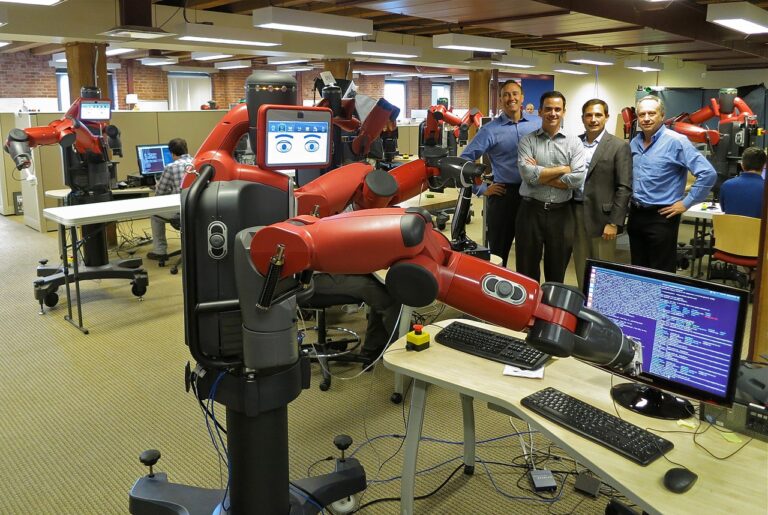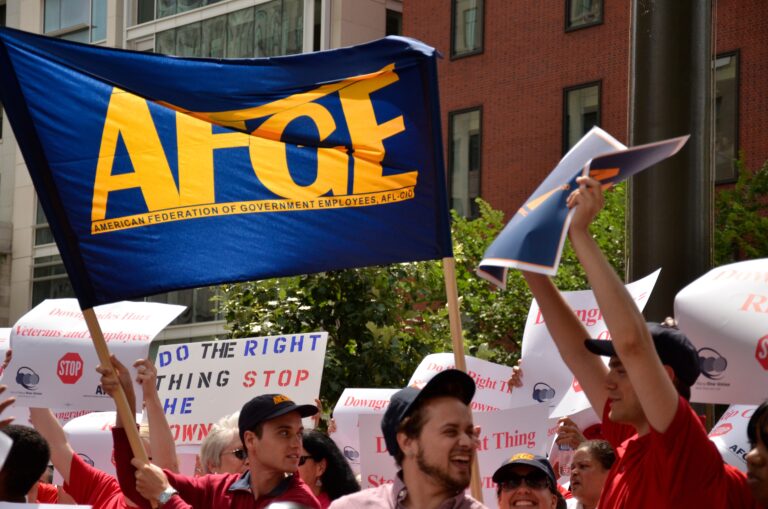Commenting on the Google walkout last Thursday, Professor Brishen Rogers told CNBC that the “numbers and level of coordination involved” were “unprecedented” in the tech sector. In white-collar tech, where employers pose as “family” and salaries are high, unions are nearly nonexistent; many watching the walkout, however, spot on the horizon a new phase of collective-bargaining-like behavior. As CNBC explains, despite both the absence of unions and the spread of contracted labor, “Google employees borrowed tactics from historical labor organizing” – i.e., calling upon the strength of the workplace’s collective and issuing a statement of demands, which, in turn, invoked in solidarity the labor campaigns of “teachers, fast food workers, and others who are using their strength in numbers to make real change.” The Verge’s Casey Newton called the walkout “wonderfully democratic,” and is “optimistic” that, while democratic values may be spare within our government, workers may be able to “get democracy” from their employers. While this walkout’s particular demands focused on eliminating forced arbitration clauses in discrimination and sexual harrassment disputes and squashing gender pay inequity, recently tech activists have been tying workers’ rights to issues involving immigration enforcement, worrying partnerships, and political silence. In general, Silicon Valley workers are pushing back against what they perceive as the social and economic harms their employers perpetuate, whether in the workplace or more broadly.
This weekend Yale University hosted the Gilder Lehrman Center’s 20th Annual Conference, a cross-disciplinary and cross-sector gathering of academics, advocates, and policy makers who examined Fighting Modern Slavery: What Works? Martina Vandenberg, director of Human Trafficking Legal Center, used her keynote address to ask for “revolutionary” efforts, rather than state prosecutions, to end the scourge of forced labor. “We need to move to something revolutionary . . . not more law but more organizing, workers’ rights and power to the people,” Vandenberg explained, as quoted by Reuters.
As the Marriott strike continues, at least one hotel is struggling sorely, according to union representatives. The Westin Book Cadillac is fielding cancellations and cannot fill rooms, seeing a drop in nightly occupancy to approximately 30 – 40 percent from a pre-strike average of 90 percent. According to the Detroit Free Press, the NHL’s Toronto Maple Leafs and multiple conferences, including a Financial Times summit, have cancelled reservations. Westin Book Cadillac workers have been striking for four weeks, and are seeking the same pay as their fellow workers in another Marriott-operated hotel, downtown in the Renaissance Center.
With a high-stakes midterm election nearing, Pennsylvania’s unions are ramping up their political activity and pushing members to recognize why union health relies on political power. And political power, union organizers and officers believe, begins first with political education. As Philadelphia’s Inquirer reports, initiatives like the Communication Workers of America’s “political activist boot camp,” which features history and economics lessons on the labor movement and the problem of wage inequality, are designed as much to educate and motivate members as they are to help members generate community enthusiasm for labor-friendly causes and candidates. Traditional canvassing and phone banking are mainstays, but unions are also exploring how best to communicate with voters. This year’s innovations include orchestrated voter drives within the workplaces – Unite Here is “dispatching” certain members to their own workplaces to share voter data and secure their coworkers’ commitments to vote.
The minimum wage is one of the key employment issues at stake on election day. Missouri News Service reports that the “fight to raise minimum wage intensifies in final days.” Huffington Post suggests that this fight may lend “embattled” Senate Democrat Claire McCaskill a hand, as her constituency is more likely to turn out to vote for the wage referendum. Campaigning in Wisconsin for Sen. Tammy Baldwin (D-Wisc.), Sen. Elizabeth Warren (D-Mass) reminded audiences that the minimum wage was once meant to support a family of three; she described the bleak poverty of a mother who lives on the federal minimum wage today (of $7.25 an hour, amounting to approximately $16,000 a year).
CNN’s Jon Sarlin briefly examines the widening “gulf” between the 39 percent of the nation living with higher local or state minimums, and the 61 percent living with the federal floor. The failure to adjust the federal wage to inflation means that workers at that minimum earn today what would have been only $6.24 an hour in 2009, when the wage was last set. Indeed, adjusting for inflation, the wage today is the lowest it has been in over 60 years. Meanwhile, Larry Kudlow, Trump’s top economic advisor and director of the National Economic Council, expounded to a live audience at a Washington Post event why “a federal minimum wage is a terrible idea.” (That is, Kudlow would prefer no wage minimum at all.) According to Kudlow, corporate tax cuts best help the average worker. Impassioned responses from Democrats and Independents came swiftly.
At the city level, Flagstaff, Arizona’s fight over a higher wage via Proposition 418 (canceling wage increases that were scheduled in 2016) has relied on deep pockets, Arizona Daily Sun describes. Spending has far surpassed typical city election spending, and celebrity involvement (pro-wage, against Prop. 418) from Amy Poehler and Lily Tomlin has further amplified the contest. Market Freedom Alliance is behind the raise-cancellation proposal.
At the corporate level, Amazon’s workers started at their new $15 minimum on Thursday. In Bloomberg, Olivia Zaleski probes deeper into the reality of Amazon’s workforce: a “largely unseen” swell of Amazon Flex workers, who are contractors, are netting after expenses as low as $5 an hour. As Zaleski explains, Amazon disputes the findings of financial analysts at Bernstein, who have calculated the low average pay, and also refuse to comment on plans to route about 15 percent of all packages through Flex drivers.






Daily News & Commentary
Start your day with our roundup of the latest labor developments. See all
December 8
Private payrolls fall; NYC Council overrides mayoral veto on pay data; workers sue Starbucks.
December 7
Philadelphia transit workers indicate that a strike is imminent; a federal judge temporarily blocks State Department layoffs; and Virginia lawmakers consider legislation to repeal the state’s “right to work” law.
December 5
Netflix set to acquire Warner Bros., Gen Z men are the most pro-union generation in history, and lawmakers introduce the “No Robot Bosses Act.”
December 4
Unionized journalists win arbitration concerning AI, Starbucks challenges two NLRB rulings in the Fifth Circuit, and Philadelphia transit workers resume contract negotiations.
December 3
The Trump administration seeks to appeal a federal judge’s order that protects the CBAs of employees within the federal workforce; the U.S. Department of Labor launches an initiative to investigate violations of the H-1B visa program; and a union files a petition to form a bargaining unit for employees at the Met.
December 2
Fourth Circuit rejects broad reading of NLRA’s managerial exception; OPM cancels reduced tuition program for federal employees; Starbucks will pay $39 million for violating New York City’s Fair Workweek law; Mamdani and Sanders join striking baristas outside a Brooklyn Starbucks.